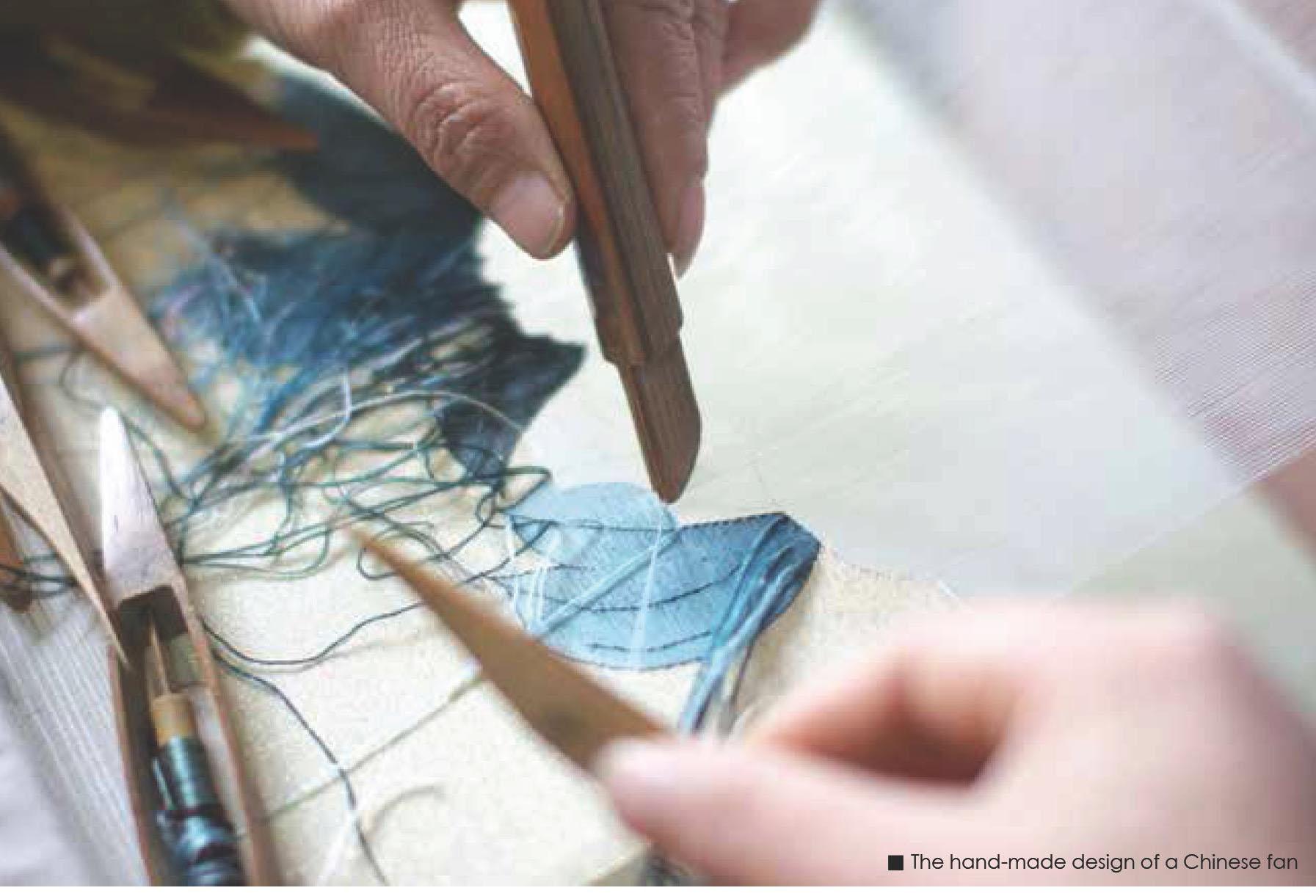Chinese Fan, Once a Symbol of Literati and Social Status
2020-07-31MoTingting
Mo Tingting



If you travel to China in summer time, its very possible to see people strolling down the roads with a fan shaking in hand to fan away the striking heat. Reputed as the “Fan-Making Kingdom”, China boasts profound history of fans. There were many anecdotes and tales about Chinese fans in historical records, such as the goose-feather fan held by Zhuge Liang, a famous military strategist during the Three Kingdoms Period (220-280). In the past, the fan played an important part in Chinese life, from the nobles to the poorest commoners. Over millennia, Chinese fans have stood the test of time and evolved into an artifact that incorporates the essence of folk culture.
Fleeting time of Chinese fan
A hand-held fan is a rigid or folding device used in China since ancient times. As far back as in the Shang Dynasty (1600 BC-1046 BC) and the Zhou Dynasty (1046 BC-256 BC), the embryonic form of Chinese fans has already taken shape. Originally, the fans, generally held in pairs, were not used for relieving summer heat, but for sheltering from the sun and keeping off sands for emperors during their outgoing inspections. These fans were generally made of luxurious materials such as feathers. Together with banners and other insignias, they were part of the ceremonial equipment of the royal retinue.
The fan was popularized during the Han Dynasty (206 BC-220 AD), especially when more affordable bamboo fans and hand-woven cattail-leaf fans were invented, allowing common people to own and wield them. By the Song Dynasty (960-1279), painted circular fans, known as “round fans” or “palace fans”, became popular in court circles and artists. Its shape, like a full moon, signifies the auspicious meaning of reunions and happiness. Fans were carried by men as well as women, and there were many classes of fans, each reserved for some special purposes. Scholars would wave their fans to show off their grace as they composed poetry or sat deep in thought. Different kinds of fans served as indicators of status. Military strategists and Taoist priests preferred feather fans. Girls of noble families liked circular fans while ordinary people usually used palm-leaf fans.
The popularity of fans even enhanced the development of painting itself. Many of the great painters devoted their talents to the decoration of fans for actual uses. The typical composition used in fan painting could be seen in many landscapes and figure paintings at the time. Awaring that their fans were not simply used and discarded, but collected and appreciated, fan painters expanded their creative abilities in poetry, painting and calligraphy to their utmost. Later, Chinese fans evolved into works of art, status symbols, props for theaters and dances, romantic gifts, and memorials of the dead.
Over the years, Chinese fans were developed into hundreds of types, such as folding fans, feather fans, silk fans and sunflower fans. These types of fans are generally circular or oval in shape, although some are hexagonal or square, with central rib support extending down to become the handle. The surface of the fan may be made of brocade, embroidery, lacquer or other fancy and delicate materials, while the handles might be made of ivory, gold, silver or precious woods. Usually, ribs of the fan were made of animal bones, wood or bamboo, while the handle was engraved with beautiful designs and decorated with jade pendants.
A carrier conveying Chinese culture
As with Chinas rich culture, there were also many types of Chinese fans throughout Chinese history. Most of them are still widely available today, of which the sandalwood fan from Suzhou, Jiangsu Province, the silk fan from Hangzhou, Zhejiang Province, the fire painting fan from Guangdong Province and the bamboo-knitted fan from Sichuan Province are known as the four most famous fans of China.
The silk is commonly used to make the cover of the round fan before the coming of folding fans. And nowadays, it is also used to make the cover of the folding fans. All the fans that with the cover of silk can be called silk fans. The person who holds the silk fan always appears gentle and cultivated.
The fire painting fan is first produced during the late Qing Dynasty (1636-1912). Then the techniques of making the fire painting fan were developed. When making the fire painting fans, the workman combines two thin glass fans together and then paints on the fan with a tailor-made pen. The painting is comely and never fades. It is a competitive product for collecting.
The bamboo-knitted fan gets the fame that as colorful as rosy clouds, and as thin as the wings of a cicada. And it is always peach-shaped. It is light yellow with a delicate cover. It seems like a piece of brocade. With the handle made by ivory or ox bone, and decorated with a pendant made from silk, the fan is of surpassing brilliancy.
Sandalwood joined the family of fans only in modern times. It is made of sandalwood, which has a natural fragrance. Even after many years, sandalwood fan is also fragrant. It is very popular with people for its unique craft and style.
The production of a fan involves intense manual work, including dying, gluing, painting, engraving, and inlaying. Take the bamboo-knitted fan as an example, you should select the one-year-old local bamboo as raw materials, so that the bamboo strips processed with special tools are crystalline and a bit glossy. The material preparation is all about manual work, with the help of only a knife. The procedures include weaving the pattern and the edge, as well as gluing certain parts. The crucial step is to make bamboo strips. The thinner the strips, the clearer and more life-like the patterns are. The pictures on the fans include natural scenery, birds, animals, and flowers, all looking vivid and life-like. The fan surface is as thin as a cicadas wings, so it is very light. Many people will mistakenly assume it is made of cotton threads. In 2008, the craftsmanship of making bamboo-knitted fan was designated as a national intangible cultural heritage.
In the Chinese language, the word “fan” has a similar pronunciation with “Shan”, which means kindness and good. Thus, fans are viewed as good-luck charms and expressions of generosity. In modern times, however, the meaning and philosophy might not be as important as before, but some people might look for fans with specific designs that might symbolize a certain value or believed to bring good luck. Fans are very common items found in many peddlers and stores, becoming the emissaries of Chinese culture.
